


Camaraderie and conservation in Costa Rica
Photos courtesy of Kyle McCarthy, Grace Ferry, Jillian Fader, Ang Campanelli and Hunt Kinnaird June 03, 2025
Students quantify biodiversity during the UD study abroad experience
When you travel to the rainforest, you expect rain. You might not expect four straight days of drenching downpours, but that was the situation University of Delaware students found themselves in as they searched for birds under a dripping canopy of tropical foliage.
The Blue Hens were in Costa Rica on a month-long study abroad, quantifying and comparing the country’s rich biodiversity. Students completed bird point counts, used acoustic monitoring technology to identify bats, and set camera traps to record wildlife. Costa Rica is home to around 900 species of birds. The rain made the students’ work difficult, as it prevented birds from flying.
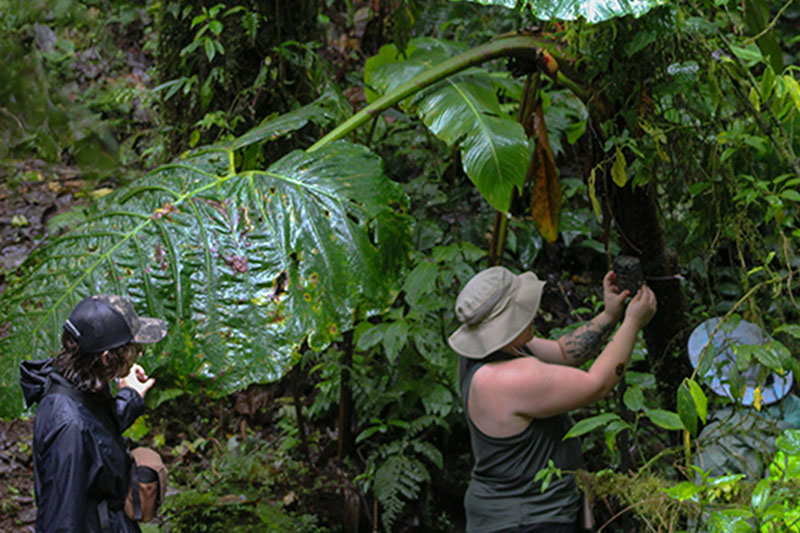
But even in the rainforest, it takes a lot to dampen a Blue Hen’s spirit. Hunt Kinnaird, an environmental science major, saw the rain as an opportunity.
“I liked the rain because that was the time I was most likely going to see amphibians like poison dart frogs,” he said.
Kinnaird is keenly interested in amphibians and plans to pursue a career in wetland ecology. His goal during the course was to see poison dart frogs in the wild. Kinnaird was in the right place; Costa Rica is one of 36 biodiversity hotspots worldwide. Although hotspots comprise just 2.5% of Earth’s land surface, they support nearly half of Earth’s plant, mammal, bird, reptile and amphibian species, with many of those species being endemics.
Kyle McCarthy, professor of wildlife ecology and undergraduate program coordinator for the Department of Entomology and Wildlife Ecology, taught the study abroad courses Conservation of Tropical Biodiversity (ENWC 444) and Debates in Conservation Biology (ENWC 450). The courses are offered every other January during the winter session. The Organization for Tropical Studies arranged lodgings and guides at several biological research stations.
“Costa Rica is a leader in land and marine conservation,” McCarthy said. “It’s a country that has prioritized conservation and built its economy around ecotourism.”
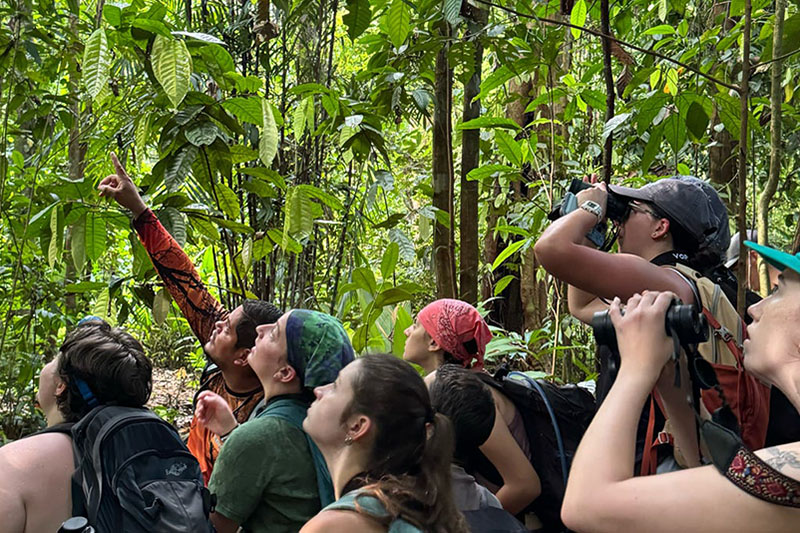
Gillian Hudson, a wildlife ecology and conservation senior and UD World Scholar, relied on her Ornithology (ENWC 418) coursework during bird point counts.
“During the study abroad, we familiarized ourselves with the technology that will be essential for a career in wildlife,” said Hudson, who is pursuing the Department of Entomology and Wildlife Ecology 4+1 BS/MS degree.
At the end of the course, students quantified and compared the biodiversity of the different ecosystems. In all, they identified 53 species of bats, hundreds of birds, including five of the six toucan species living in Costa Rica, dozens of mammals, and a plethora of insects. Students used the data they collected in a hypothetical, conservation decision-making framework.
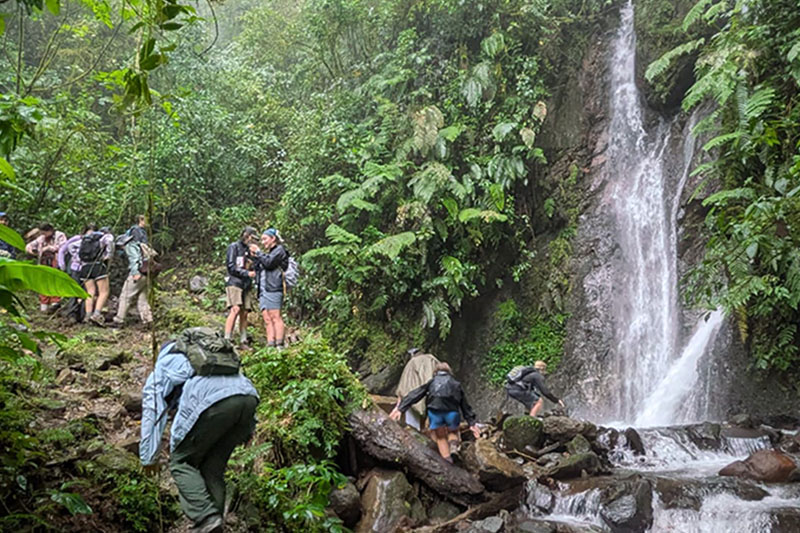
“In other words, if they could only protect three of the seven ecosystems, how would they decide which three to protect,” said McCarthy, a faculty member in the College of Agriculture and Natural Resources.
The project forced students to consider how the data they will collect as biologists affects policy and decision-making.
“We aren’t just out counting animals for the fun of it,” McCarthy said. “These are real decisions being made in the conservation world, and some of these students will go on to be the decision-makers.”
Anna Servidio, an honors environmental science major with a minor in insect and wildlife ecology and conservation, appreciated the academic rigor of the course.
“I liked that this program was a research-intensive experience,” said Servidio, a UD Climate Scholar. “It felt more like an internship with the amount of fieldwork that we were doing, and to me, it was valuable to gain skills that will be applicable in my future career.”
Conservation is close to Servidio’s heart. She is the vice president of the student organization Students for the Environment (S4E) and an active member of Epsilon Eta (EH), a gender-inclusive professional fraternity focused on raising environmental awareness.
“While we were in Costa Rica, the U.S. pulled out of the Paris Climate Agreement,” Servidio said. “Climate change is something we all care about, and it made the topics explored in class about the use and misuse of Earth’s biological and physical resources even more important.”
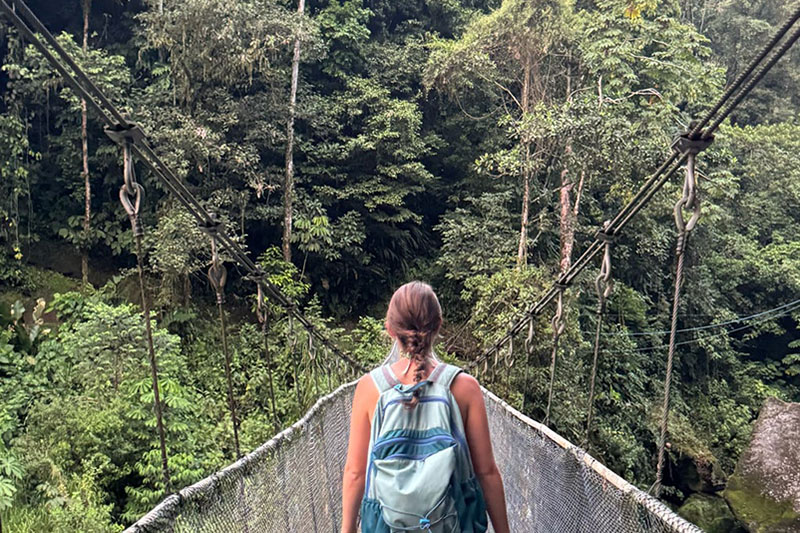
The students’ mix of majors added a variety of perspectives during class discussions.
“We all take different classes, so we shared our knowledge, which made for an enriching conversation,” Servidio said.
It also provided students with a chance to share their knowledge.
“Having other passionate people around me helped make it more exciting,” Servidio said of her first experience birding with binoculars. “It’s not like a traditional classroom where you’re only learning from the professor; I enjoyed learning from my peers.”
As the students searched for birds and bats, they found friendships. Camaraderie continued to grow as the group dealt with rain and respiratory illness. Kinnaird continued his search for poison dart frogs without success.
The Osa Peninsula is one of Central America's most pristine biodiverse regions and home to Corcovado National Park. It’s a favorite location on the study abroad program, now in its 11th session. The 2025 program marked the first stay on the peninsula's northern side. To reach this remote location, McCarthy took his students on a two-hour boat ride along the coast. They disembarked on a sandy beach and hiked to the research station, their home base for the next few days.
From the station, the group planned an evening hike to a cave to watch for bats. Hudson was preparing for the hike with a healthy coating of bug spray when she saw a sight that took her breath away. As she gasped in amazement, her coursemates rushed to her side.
“I could feel everyone run up behind me; they were bumping into my back and asking what was happening. All I could do was point,” Hudson said. “A mother puma with a cub walked across the beach right in front of us.”
McCarthy, who studies big cats, said most of the wild felines he encounters are sedated or captured.
“It's rare to be somewhere you can see a large cat in person,” McCarthy said.
The bat cave would have to wait until the following day, when students witnessed thousands of bats emerge at sunset. McCarthy said these shared experiences and chance encounters with wildlife leave the group feeling exultant.
“First, everyone is quiet and kind of in awe,” McCarthy said. “Then once the moment is over, everyone's happy and excited and giving high-fives.”
McCarthy has had his fair share of wildlife encounters. He said the best part of the sightings during the course was that every student joined in the experience. The group’s spirit of camaraderie meant that someone was always running to gather fellow students who would otherwise miss out.
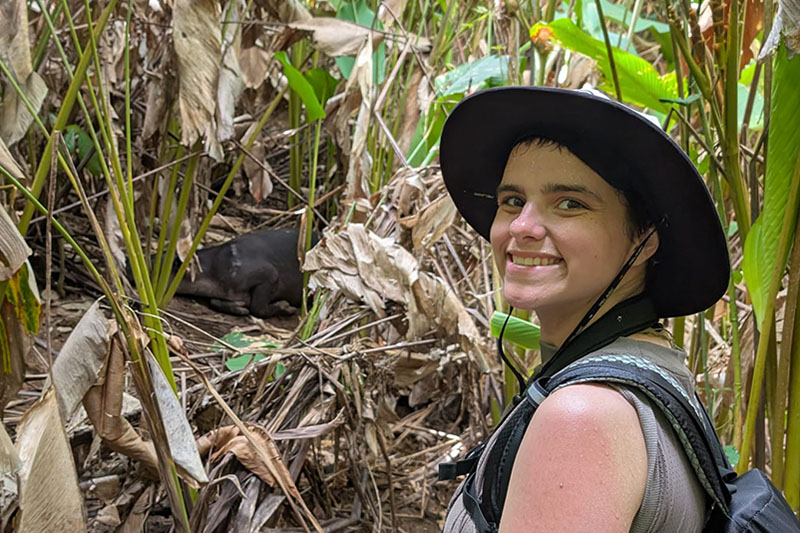
The first night on the Osa Peninsula, Kinnaird decided to turn in early. He left the group playing card games in the station and walked up the hill to a sleeping hut he shared with another student.
“I had my headlamp on, and when I turned a corner, there was a tapir,” Kinnaird said, startled by the large, herbivorous mammal with a short, prehensile nose trunk. “It must have been 15 yards from me. I'd never seen a tapir before. I hadn’t realized how big they were.”
As Kinnaird froze in awe, watching the odd-looking animal graze, he thought of McCarthy.
“Dr. McCarthy has led the Costa Rica study abroad program for years and hadn’t seen a tapir before,” Kinnaird said. “I knew I had to get him.”
Kinnaird dashed down the hill, then back up with McCarthy and the others. They managed to see and photograph the tapir.
“It was great to have that experience with Dr. McCarthy, seeing an animal for the first time,” Kinnaird said.
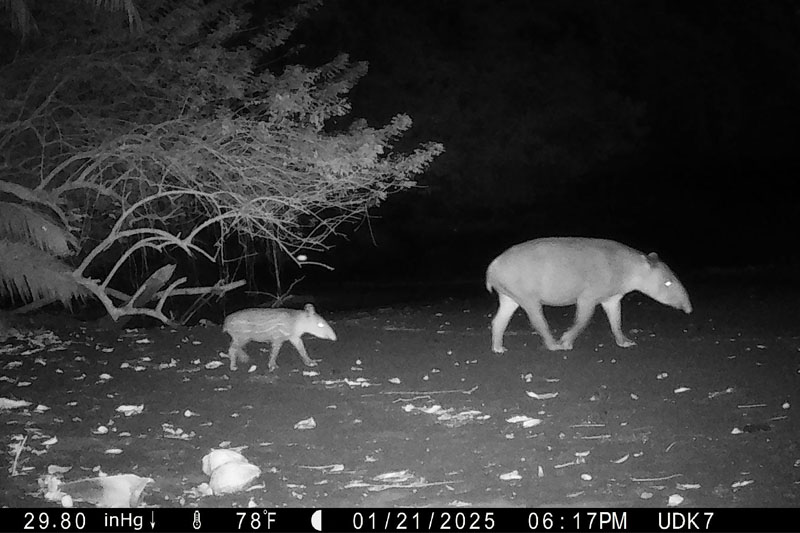
Kinnaird received a karmic reward for his thoughtfulness. He still hadn’t spotted any poison dart frogs. But with only five days left of the course, his luck finally changed.
“We were whitewater rafting out from the station, we stopped for lunch, and we’re all just completely drenched and tired,” Kinnaird said. “Suddenly, a woman comes running out of the woods, saying “grenouille,” I recognized the French word for frog from my time as a chef.”
Kinnaird ran to investigate.
“In the forest, there were 20 to 30 blue jean poison dart frogs,” Kinnaird said of the frogs with denim-colored legs and red bodies. “We finally found them.”
True to form, Kinnaird ran to gather the rest of his cohort. They celebrated his success while observing the frogs together. At this point, the group of classmates felt more like family.
“Being from a different major, most of these students were strangers to me,” Servidio said. “It took a bit of time, but we became family, and I think that is another thing study abroad can offer: lifelong friendship.”
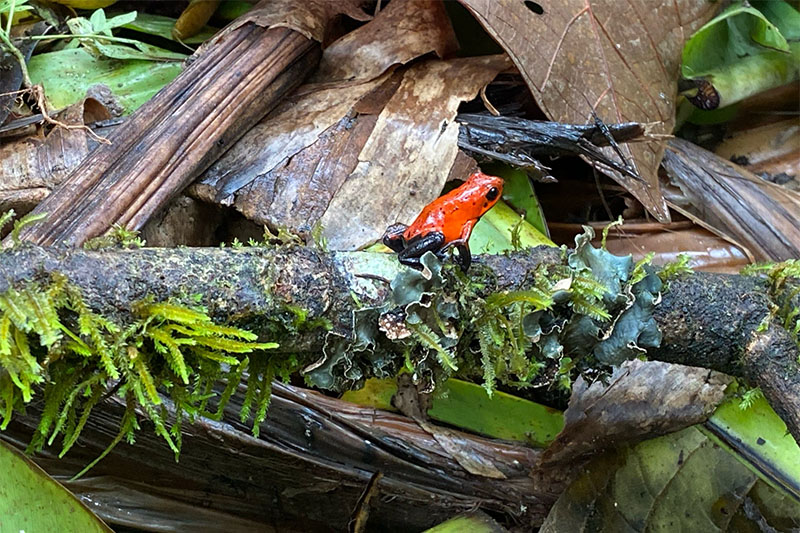
Contact Us
Have a UDaily story idea?
Contact us at ocm@udel.edu
Members of the press
Contact us at mediarelations@udel.edu or visit the Media Relations website

